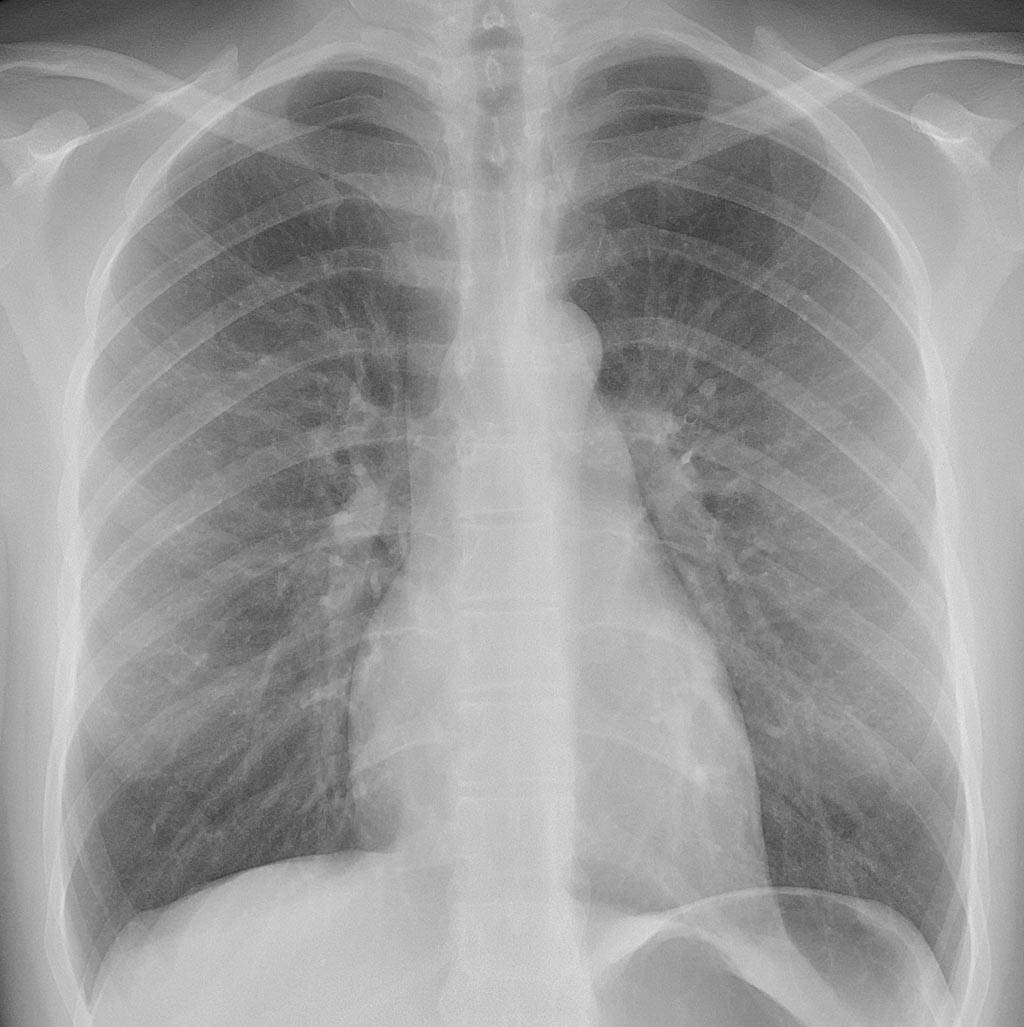Release of X-Ray Database to Boost AI Research
By MedImaging International staff writers
Posted on 16 Oct 2017
The U.S. National Institutes of Health (NIH) (Bethesda, MD, USA) recently made available a massive database of chest X-rays, marking a huge step toward integrating artificial intelligence (AI) mechanisms into clinical practice.Posted on 16 Oct 2017
The release of over 100,000 anonymized chest X-ray images and their corresponding data to the scientific community by the NIH Clinical Center will allow researchers across the world to freely access the datasets and improve their ability to teach computers how to detect and diagnose disease. The AI mechanism can ultimately allow clinicians to make better diagnostic decisions for their patients.

Image: A normal chest x-ray (Photo courtesy of Wikipedia).
Reading and diagnosing chest X-ray images is a complex reasoning problem which usually careful observation and knowledge of anatomical principles, physiology and pathology. This makes it more difficult to develop a consistent and automated technique for reading chest X-ray images while simultaneously considering all common thoracic diseases. The NIH has compiled the dataset of scans from over 30,000 patients, including several with advanced lung disease, after rigorous screening to remove all personally identifiable information. Academic and research institutions will be able to use this free dataset to teach a computer to read and process extremely large amounts of scans, for confirming the results found by radiologists and potentially identify other findings which may have been overlooked.
Additionally, the advanced computer technology may also be able to help identify slow changes occurring over the course of multiple chest X-rays that might otherwise be overlooked; benefit patients in developing countries who do not have access to radiologists to read their chest X-rays, and create a virtual radiology resident that can later be taught to read more complex images such as CT and MRI in the future.
In line with its ongoing commitment to data sharing, the NIH research hospital expects to continue adding a large dataset of CT scans to be made available over the coming months.
Related Links:
U.S. National Institutes of Health














